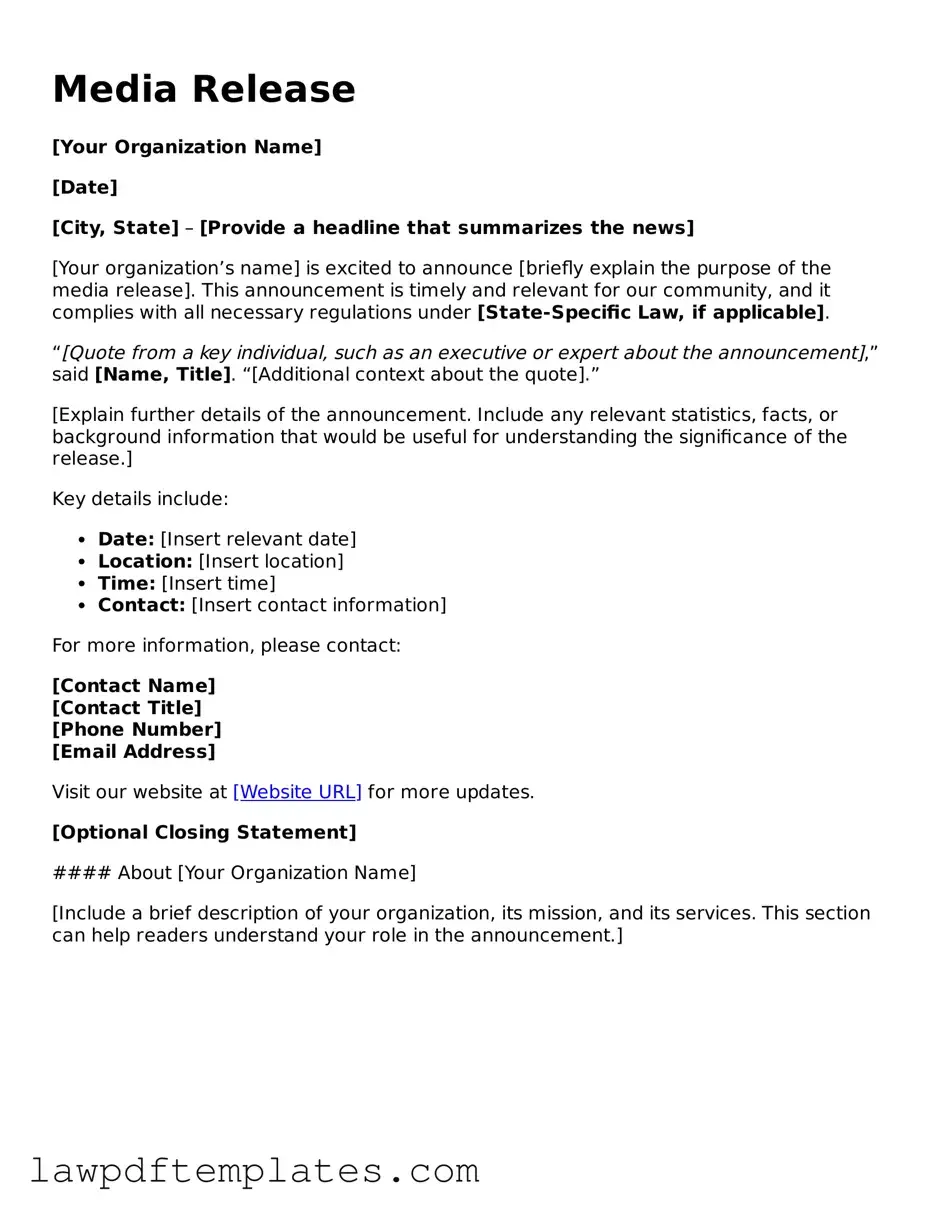Media Release
[Your Organization Name]
[Date]
[City, State] – [Provide a headline that summarizes the news]
[Your organization’s name] is excited to announce [briefly explain the purpose of the media release]. This announcement is timely and relevant for our community, and it complies with all necessary regulations under [State-Specific Law, if applicable].
“[Quote from a key individual, such as an executive or expert about the announcement],” said [Name, Title]. “[Additional context about the quote].”
[Explain further details of the announcement. Include any relevant statistics, facts, or background information that would be useful for understanding the significance of the release.]
Key details include:
- Date: [Insert relevant date]
- Location: [Insert location]
- Time: [Insert time]
- Contact: [Insert contact information]
For more information, please contact:
[Contact Name]
[Contact Title]
[Phone Number]
[Email Address]
Visit our website at [Website URL] for more updates.
[Optional Closing Statement]
#### About [Your Organization Name]
[Include a brief description of your organization, its mission, and its services. This section can help readers understand your role in the announcement.]
